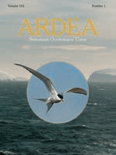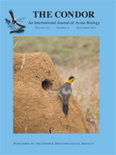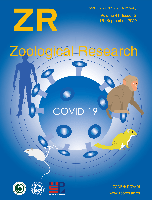
JOURNAL OF AVIAN BIOLOGY
Scope & Guideline
Unveiling the secrets of avian life through rigorous study.
Introduction
Aims and Scopes
- Avian Ecology and Behavior:
Research on the ecological roles of birds, their behaviors in various environments, and interactions with other species, including aspects such as foraging strategies, mating systems, and social structures. - Physiology and Morphology:
Studies exploring physiological adaptations, morphological traits, and their implications for survival, reproduction, and migration patterns in birds. - Conservation and Environmental Impact:
Investigations into the effects of environmental changes, anthropogenic influences, and habitat loss on bird populations, emphasizing conservation strategies and policy recommendations. - Genetics and Evolution:
Research examining genetic diversity, evolutionary processes, and phylogenetic relationships among bird species, including the implications of hybridization and speciation. - Migration and Movement Patterns:
Studies focused on migratory behaviors, navigation, and the influence of climatic and environmental factors on migration routes and timing.
Trending and Emerging
- Impact of Climate Change:
An increasing number of studies focus on how climate change affects avian behavior, physiology, and population dynamics, highlighting the urgency of understanding these impacts for conservation efforts. - Urban Ecology and Adaptation:
There is a growing interest in how birds adapt to urban environments, including changes in behavior, morphology, and reproductive strategies, reflecting the broader implications of urbanization on wildlife. - Anthropogenic Stressors:
Research examining the effects of multiple anthropogenic stressors—such as pollution, habitat modification, and noise—on avian health and behavior is gaining traction, emphasizing the need for integrated approaches to conservation. - Genomic and Molecular Studies:
An upward trend in the use of genomic tools and molecular techniques to understand avian diversity, health, and evolutionary mechanisms is evident, representing advancements in the field. - Behavioral Ecology of Brood Parasitism:
Increasing interest in the dynamics and evolutionary implications of brood parasitism, including host-parasite interactions and counter-adaptive strategies, showcases a nuanced area of avian behavior.
Declining or Waning
- Traditional Taxonomy Studies:
Research focused solely on traditional taxonomic classifications has decreased as the field shifts toward integrative approaches that combine genetic, morphological, and ecological data. - Static Habitat Studies:
Papers focusing on static habitat descriptions without consideration for dynamic changes or anthropogenic impacts have become less prevalent, reflecting a trend towards more applied ecological research. - Purely Descriptive Studies:
There is a noticeable decline in purely descriptive studies that do not advance hypotheses or provide novel insights, as the journal emphasizes more hypothesis-driven research.
Similar Journals

ANIMAL BIOLOGY
Unveiling the Wonders of BiodiversityANIMAL BIOLOGY is a distinguished journal published by BRILL, focusing on the dynamic fields of Animal Science and Zoology, as well as Ecology, Evolution, Behavior, and Systematics. With an ISSN of 1570-7555 and an E-ISSN of 1570-7563, this quarterly journal serves as a pivotal platform for researchers and professionals seeking to contribute to the understanding of animal biology across diverse ecological contexts. The journal is recognized with a 2023 Scopus ranking of #234 out of 490 in the Animal Science and Zoology category, placing it within the 52nd percentile, alongside a rank of #409 out of 721 in Ecology, marking a solid contribution to the field. Although it currently holds a Q3 quartile in both categories, its commitment to quality research and novel insights continues to bolster its significance within the academic community. The open access option coupled with its publication history from 2003 to 2024 ensures a wide dissemination of knowledge, drawing in a global audience of researchers, professionals, and students eager to explore the intricacies of animal biology. By promoting high-quality discussions and innovative studies, ANIMAL BIOLOGY plays an essential role in advancing the understanding of life sciences and the evolution of biodiversity.

ARDEA
Advancing avian knowledge through rigorous research.ARDEA, published by the Nederlandse Ornithologische Unie, is a prominent journal in the fields of Animal Science, Zoology, and Ecology. With its rich history spanning from 1981 to the present, ARDEA serves as a vital platform for researchers and professionals dedicated to avian studies and the ecological sciences. This quarterly journal is recognized in the Q3 category for both Animal Science and Ecology, as per the latest rankings, and maintains an impressive global standing within its subject areas. Although it operates without an open access model, the journal provides significant insights and contributions to the understanding of bird biology, conservation, and evolution. Researchers and students seeking to advance their knowledge in ornithology and related fields will find ARDEA to be an indispensable resource, promoting high-quality research and fostering academic collaboration.

MALIMBUS
Unveiling the mysteries of bird migration and habitats.MALIMBUS is a peer-reviewed journal published by the West African Ornithological Society, focusing on the study of avian biology and conservation. It aims to disseminate important research findings that contribute to the understanding of bird species, their habitats, and the challenges they face across West Africa and beyond. Although currently not available in an open-access format, the journal is an invaluable resource for ornithologists, ecologists, and industry professionals keen on advancing their understanding of avian science. Those engaged in research on bird migration, breeding behaviors, and conservation strategies will find MALIMBUS to be a vital platform for sharing innovative ideas and fostering collaborations. With its commitment to quality and rigorous review processes, MALIMBUS is an essential reference for anyone dedicated to studying and preserving avian diversity.

Ornithological Applications
Empowering research for the next generation of ornithologists.Ornithological Applications, published by Oxford University Press, is a premier academic journal dedicated to advancing the field of ornithology through innovative research and practical applications. With an impressive impact factor and recognized as a Q1 journal in both Animal Science and Zoology as well as Ecology, Evolution, Behavior and Systematics, it ranks among the top journals in its field, holding significance for researchers, professionals, and students alike. With a historical publication span from 1981 to the present, this journal has solidified its reputation for disseminating high-quality articles that explore avian biology, conservation, and management strategies. For those interested in open access publishing options, please check the title change details. As a vital resource, Ornithological Applications serves as a cornerstone for professionals looking to enhance their understanding of avian science and its critical applications in today's rapidly changing ecosystems.

NOTORNIS
Advancing avian knowledge for a sustainable future.NOTORNIS is a prestigious academic journal published by the Ornithological Society of New Zealand, dedicated to advancing the field of ornithology and contributing meaningful research related to avian species. With ISSN 0029-4470 and E-ISSN 1177-7680, this journal has been a vital resource for scholars since its inception in 1982, continuously fostering discourse within the scientific community, particularly in the realms of animal science and zoology. Though it currently holds a quartile ranking of Q4, with a Scopus rank of #250 out of 490 in its category, NOTORNIS occupies a unique niche in ornithological research, promoting studies that highlight the ecological and biological intricacies of birds. This journal is critical not only to researchers and professionals in zoology but also to students and educators aiming to engage with contemporary avian research. As New Zealand's leading ornithological publication, NOTORNIS underscores the importance of avifaunal studies in conserving biodiversity and understanding ecological dynamics.

ZOOLOGICAL RESEARCH
Exploring the Depths of Biodiversity and EcologyZoological Research, published by Science Press, stands as a premier open-access journal in the fields of animal science, zoology, and ecology. Since its inception in 1980, it has fostered an inclusive platform for innovative research and dialogue within the scientific community, enabling researchers from across the globe to share their findings and insights. The journal's significant impact is underscored by its classification in the Q1 quartile across multiple categories, including Animal Science and Zoology, Ecology, and Nature Conservation for 2023, as well as its impressive rankings within Scopus, placing it in the top tier of its respective fields. Situated in Beijing, China, Zoological Research not only contributes to advancing knowledge but also emphasizes the critical importance of conservation practices in today’s rapidly changing ecosystems. With its commitment to open access, researchers, educators, and students alike benefit from immediate, unrestricted access to vital scientific information, making it an essential resource for anyone involved in the biological sciences.

JOURNAL OF FIELD ORNITHOLOGY
Exploring the Frontiers of Field OrnithologyJOURNAL OF FIELD ORNITHOLOGY, published by the Resilience Alliance, is a premier academic journal dedicated to advancing knowledge in the fields of ornithology, ecology, and animal behavior. With an ISSN of 0273-8570 and a growing E-ISSN of 1557-9263, this journal has been a vital platform for researchers since its inception in 1996, continuing to publish cutting-edge studies up until 2024. The journal is recognized within the academic community, holding a Q2 ranking in Animal Science and Zoology and a Q3 ranking in Ecology, Evolution, Behavior and Systematics as of 2023. While the journal does not currently operate under an open access model, it remains a critical source for researchers, students, and professionals seeking to explore innovative research and discoveries in field ornithology. The diverse range of topics covered underscores its commitment to highlighting significant findings and fostering a deeper understanding of avian species and their ecosystems.

ACTA ETHOLOGICA
Shaping the Future of Ethological ResearchACTA ETHOLOGICA, published by Springer Heidelberg, is a leading journal in the fields of Animal Science and Zoology, as well as Ecology, Evolution, Behavior, and Systematics. With an ISSN of 0873-9749 and an E-ISSN of 1437-9546, this journal has established itself as a notable platform for innovative research and review articles since its inception in 1998. As of 2023, it holds a Category Quartile of Q3 in both its primary categories, showcasing its commitment to advancing knowledge within these scientific domains. The journal aims to facilitate the dissemination of cutting-edge research on animal behavior and ecology, fostering collaboration among researchers, professionals, and students. While it does not currently offer Open Access options, ACTA ETHOLOGICA remains crucial for those looking to stay informed about the latest developments and trends in ethology. For inquiries, the journal's editorial office is located at Tiergartenstraße 17, D-69121 Heidelberg, Germany.

WATERBIRDS
Illuminating the World of Aquatic AvifaunaWATERBIRDS, published by the WATERBIRD SOC, serves as a vital scholarly resource in the field of Animal Science and Zoology. With its ISSN 1524-4695 and E-ISSN 1938-5390, this journal has established a significant presence since its inception in 1996, continuing to contribute valuable insights and research up to 2024. Recognized for its impact within the academic community, WATERBIRDS is currently positioned in the third quartile (Q3) for its category in 2023, ranking 335 out of 490 in Scopus's Agricultural and Biological Sciences sector, which underscores its role in promoting the study of avian species and their habitats. The journal is accessible to a wider audience, aligning with the growing demand for open access to scientific knowledge. By disseminating research that addresses both ecological and conservation issues pertinent to waterbirds, this publication serves as an essential platform for researchers, professionals, and students dedicated to advancing the understanding of avian biology and related fields.

ORNIS FENNICA
Exploring Avian Ecology: A Gateway to KnowledgeORNIS FENNICA, published by BirdLife Finland, is a seminal journal dedicated to the field of ornithology and avian ecology. Established in Finland, this journal has been a vital resource for researchers, professionals, and students since its inception, evolving through converged publication periods from 1979 to 1985 and again from 1991 to the present. ORNIS FENNICA holds a Q2 category ranking in Animal Science and Zoology for 2023, indicating its significant influence and reputation within the academic community, as reflected in its Scopus ranking of 242 out of 490 in its field. The journal aims to promote the study of birds, encompassing aspects such as behavior, conservation, and biodiversity, thus serving as a crucial platform for disseminating innovative research findings. Although it is not open access, ORNIS FENNICA remains committed to advancing ornithological knowledge and supporting the scientific community's efforts to understand and protect avian species. For those invested in the nuances of bird research, this journal offers an invaluable repository of scholarly articles, reviews, and insights.